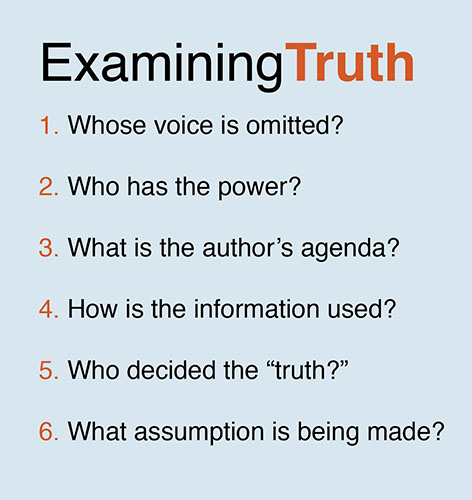What?
When?
Why?
Generating questions also provides a purpose for reading. Students’ engagement in the reading process increases when they explore their own interests. Written questions and responses also increase text comprehension, improve performance on writing assessments,1 and prepare students to generate and answer questions in college, career and civic life.
How?
- Choose a central text: Challenge the Text works with either literary of informational texts. Consider selecting two or more texts that approach the same topic from different perspectives or through different media. Doing so will address ELA-Literacy.R.7.
- In order for students to determine what is not included in the text, they must first understand what is found in the text. Begin by asking text-dependent questions that require students to:
- determine the text's central ideas;
- describe how individuals, events and ideas are portrayed and developed over the course of the text; and
- analyze how a particular point of view is reflected in the text.
- Model generation of critical question types. This strategy uses critical questions to uncover what is not in the text yet is significant for text analysis. Students will likely need prompts and scaffolding to generate questions that reveal these absences.
- Have students generate their own questions.
- Prior to reading, question generation sets a purpose for engaging the text.
- During reading, remind students to pause and ask questions as they encounter perplexing areas, suspicion or contradiction. Although inferential in nature, these questions should point to specific instances in the text, and their answers should rely heavily on textual evidence and reasoning.
- During re-reading, ask students to generate more questions and give responses grounded in evidence from the text.
- After reading, prompt students to reflect on which of their questions were answered by the text, which ones remain and how they might go about finding answers.
English language learners
Provide English language learners with sentence starters to help them structure effective and critical questions. The five w’s (who, what, where, when and why) can offer a great place to begin an interrogative sentence. English language learners benefit from the visual cues included in the anchor chart example below.
Connection to anti-bias education
Challenge the Text places an anti-bias lens on the literacy experience. Students generate and respond to critical questions, raising issues related to power within the social contexts of race, class, gender, sexual orientation, etc. This method gives voice to marginalized perspectives and alternative readings of dominant texts, embedding critical literacy practices into the Perspectives curriculum.
Sample Anchor Chart
Display anchor charts like the one below to visually prompt students to ask critical questions during shared and independent reading.
